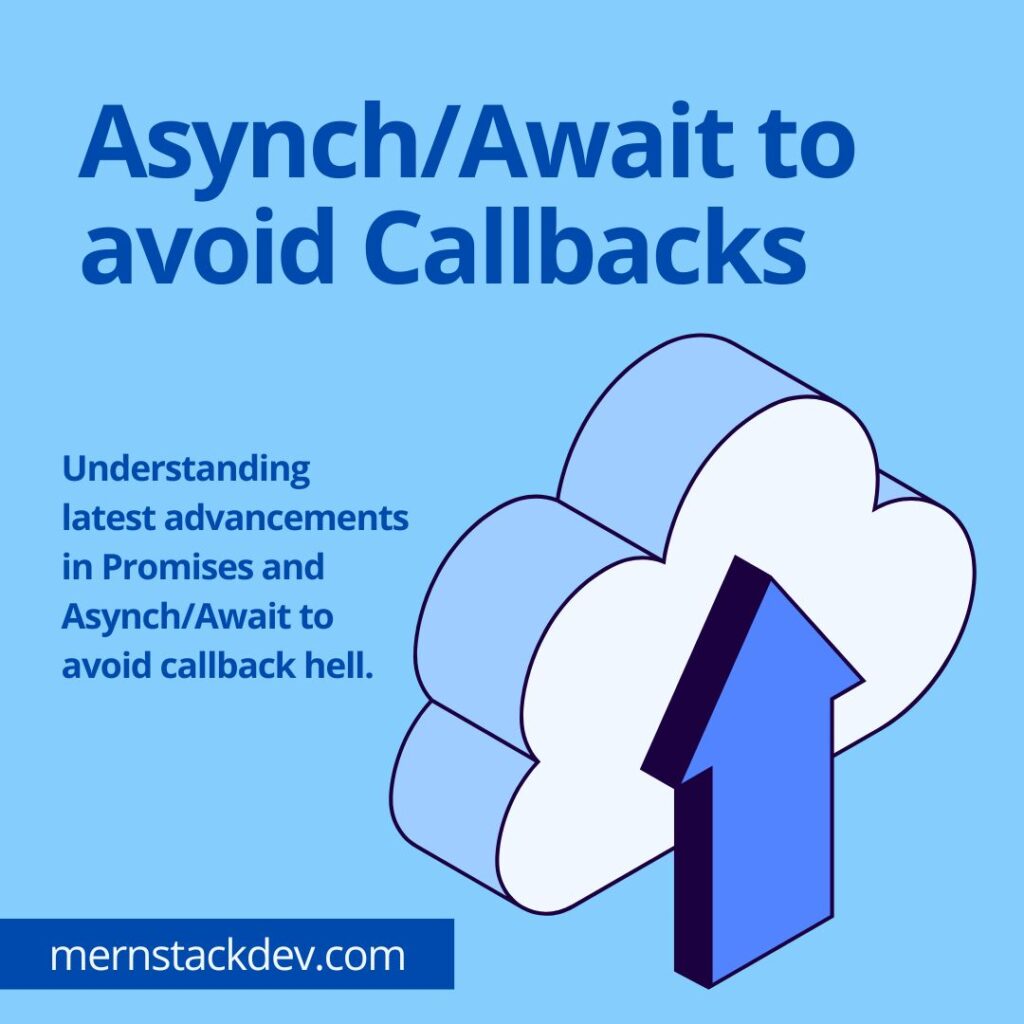Introduction
The landscape of JavaScript has been evolving rapidly, introducing more robust techniques and structures to handle complex programming issues, particularly those involving asynchronous operations. Two notable advancements aimed at addressing these challenges are Promises and the async/await syntax. These tools work to streamline asynchronous programming, making code easier to write and understand. By learning how to effectively utilize Promises and async/await, developers can avoid the common pitfalls of callback hell, resulting in cleaner, more efficient code. This article explores how these constructs offer a powerful approach to managing asynchronous operations in JavaScript.
Understanding Promises
 Image courtesy: Unsplash
Image courtesy: Unsplash
What are Promises?
Promises in JavaScript are a modern way to handle asynchronous operations. They act as a placeholder for values not necessarily known when the promise is created. This allows asynchronous methods to return values like synchronous methods: instead of the final value, the asynchronous method returns a promise to supply the value at some point in the future. A promise is in one of these three states:
– Pending: The initial state of a promise. The operation has not completed yet.
– Fulfilled: The operation completed successfully and the promise now has the resolved value.
– Rejected: The operation failed and the promise has a reason for the failure. This reason is usually an error of some kind.
Promises are particularly useful when dealing with code that requires a series of asynchronous operations, where each subsequent operation starts when the previous one has completed. The use of promises helps to avoid the complexity and management issues associated with traditional callback-based approaches.
How do Promposes work?
To understand how promises work, it’s important to understand the syntax and the flow of execution within a promise-enabled function. A new promise is created using the “new Promise” constructor which takes a function as an argument. This function is called the executor, and it runs automatically when the promise is constructed. It contains the asynchronous operation, and calls either the resolve or reject function to either fulfill the promise or reject it. Here’s a basic structure of a promise:
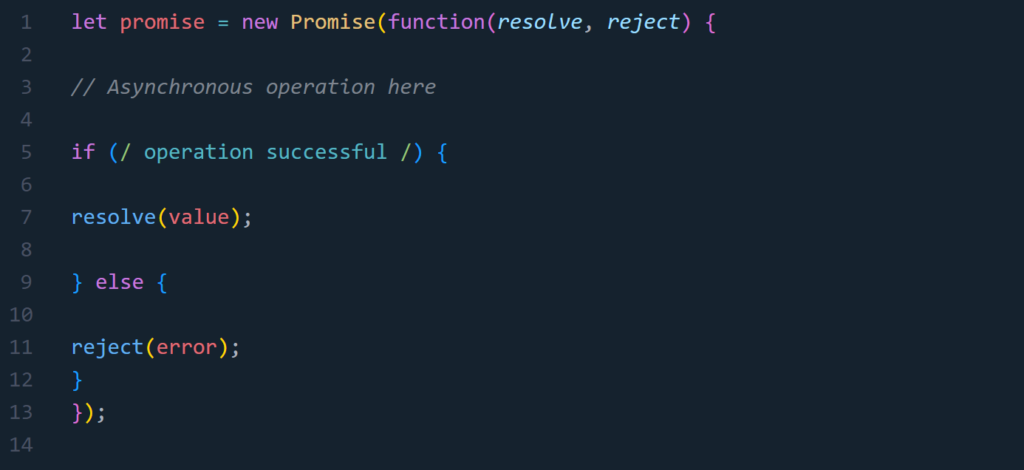
Once a promise is created, it can be used with the \`.then()\`, \`.catch()\`, and \`.finally()\` methods to handle fulfillment, rejection, and cleanup tasks, respectively.
– \`.then()\` takes up to two arguments: a callback for a success case, and an optional callback for a failure.
– \`.catch()\` is used to specify what to do if the promise is rejected.
– \`.finally()\` is a method that allows you to run logic regardless of the promise’s fate, useful for cleaning up resources, for instance.
Understanding these methods and their proper use is crucial in managing complex asynchronous JavaScript code more effectively.
Using async/await
Introduction to async/await
The async/await syntax in JavaScript is built on top of promises. It provides a more convenient and clearer way to handle asynchronous operations compared to chaining promises. Introduced in ES2017, async/await helps manage asynchronous code more like synchronous code, which, in turn, makes it easier to read and debug.
Keyword \`async\` is used to declare an asynchronous function, which then allows you to use the \`await\` keyword within it. The \`await\` keyword pauses the execution of the async function and waits for the Promise’s resolution, and then resumes the async function’s execution and returns the resolved value.
Benefits of using async/await
Using async/await in your JavaScript code can greatly improve readability and error handling. Here are a few benefits:
– Simplifies complex logic involving asynchronous operations: Nested promises can get quite complex and hard to manage and understand. Async/await helps you write asynchronous code that appears almost as if it were synchronous.
– Error handling: Async/await makes it simpler to handle errors using try/catch blocks traditionally used in synchronous code, rather than relying on \`.catch()\` methods of promises.
– Debugging: Debugging async/await code is easier than debugging chained promises because the code executes in a more predictable manner.
Syntax and implementation of async/await
To implement async/await, you mark a function with the \`async\` keyword, and then use \`await\` within it to handle the asynchronous operations. Here’s a simple example to demonstrate:
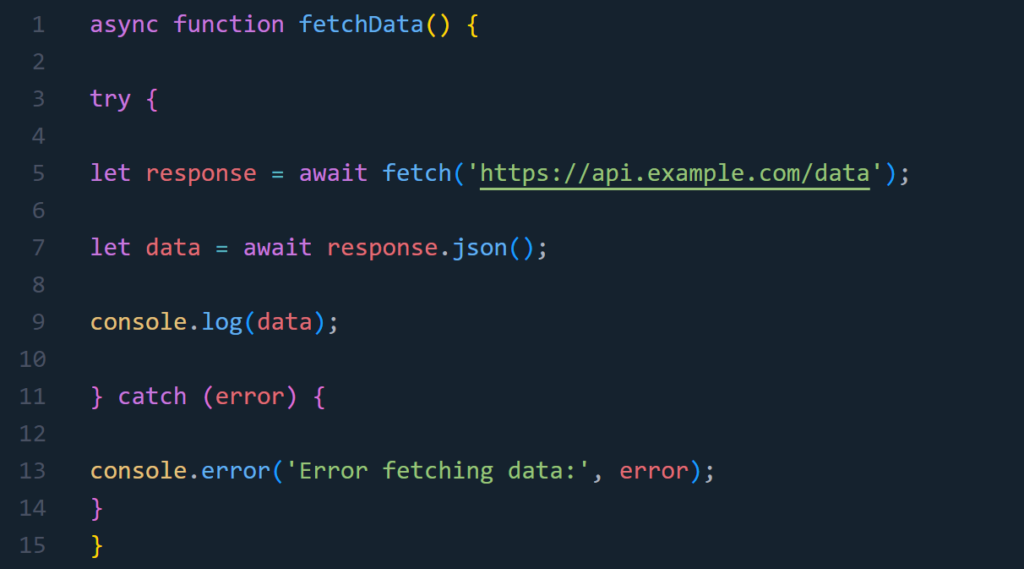
In this example, \`fetchData\` is an asynchronous function. Inside it, \`fetch\` is called to get data from a server. The \`await\` keyword is used to wait for the promise returned by \`fetch\` to resolve, before moving on to convert the response to JSON. If the promise rejects (e.g., due to network error), the control moves to the \`catch\` block, logging the error.
This model significantly simplifies handling of asynchronous dependencies compared to the nested callbacks and even promises alone. It leads to cleaner, more intuitive code that’s easier to read and maintain.
Overcoming Callback Hell
 Image courtesy: Unsplash
Image courtesy: Unsplash
What is callback hell?
Callback hell, also known colloquially as “Pyramid of Doom,” is a common problem in JavaScript, particularly with earlier patterns of handling asynchronous operations. It occurs when multiple asynchronous functions are nested within one another, leading to code that is both difficult to read and maintain. This nesting creates a visual structure similar to a pyramid, which gets progressively wider with more nested callbacks. The main issues with callback hell are the tangled control flow, which makes reasoning about the code difficult, and error handling, which becomes cumbersome as one needs to handle errors at each level of the nesting.
How Promises and async/await help avoid callback hell
Promises and async/await are two syntactical features in JavaScript that simplify working with asynchronous code, providing clear advantages over the traditional callback approach. Promises represent a future value that can eventually be fulfilled with a result or rejected with an error. They allow you to attach callbacks rather than passing them, which organizes the code into more manageable, successive steps.
Async/await, building on promises, makes the asynchronous code appear and behave a little more like synchronous code. This is achieved by using the \`async\` keyword before a function, making the function return a promise, and the \`await\` keyword inside it to pause the code on that line until the promise resolves, thus preventing the pyramid structure seen in callback hell.
Examples illustrating the transformation from callback hell to using Promices/async await
Consider a scenario where you need to fetch user data, then fetch his projects based on his user ID, and finally log the project details. Using plain callbacks, the code would typically look like this:
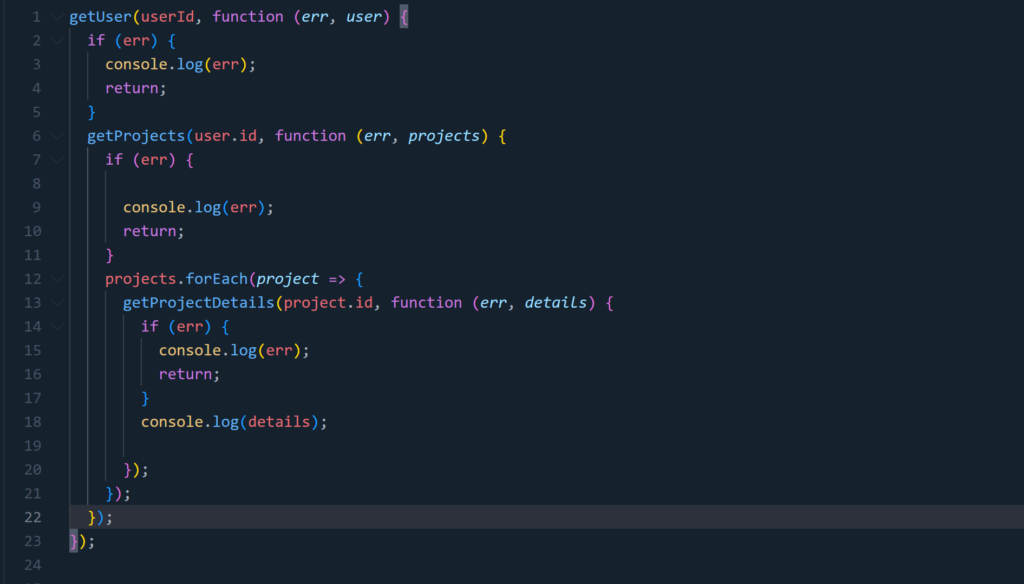
Now, using Promises, the code is flattened:
Using sync/await, the code becomes even cleaner:
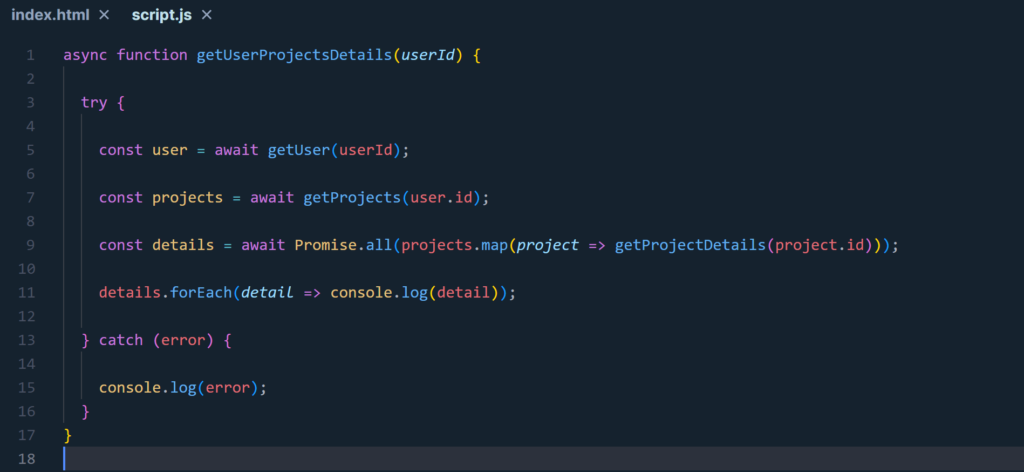
Best Practices for Using Promises and asback hell?
Promises simplify managing asynchronous operations by providing a cleaner, more modular structure. Instead of nested callbacks, Promises define a sequence of operations and streamline error handling, making the code more readable and maintainable.
Can async/await be used with older JavaScript versions?
Async/await was introduced in JavaScript with ES2017 (ECMAScript 8). Older environments that do not support ES2017 will not natively support async/await. However, developers can use transpilers like Babel to compile newer JavaScript features to a version compatible with older browsers.
Is error handling different when using async/await compared to Promises?
Error handling in async/await is more straightforward and syntactically similar to synchronous code, using try/catch blocks. This contrasts with Promises, where errors are handled using the \`.catch()\` method. Both methods provide robust ways to manage errors, but many developers find async/await’s approach simpler and more intuitive.

